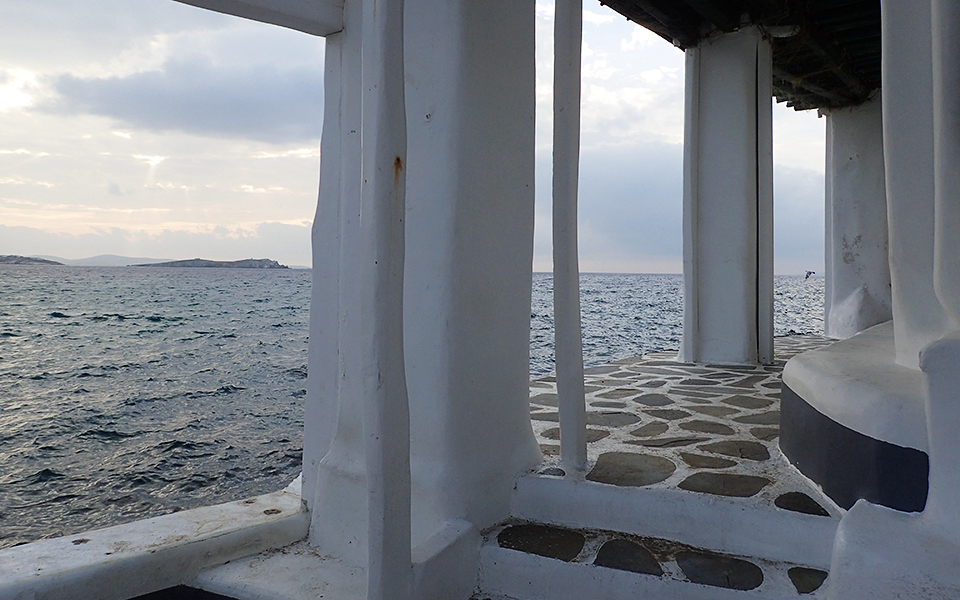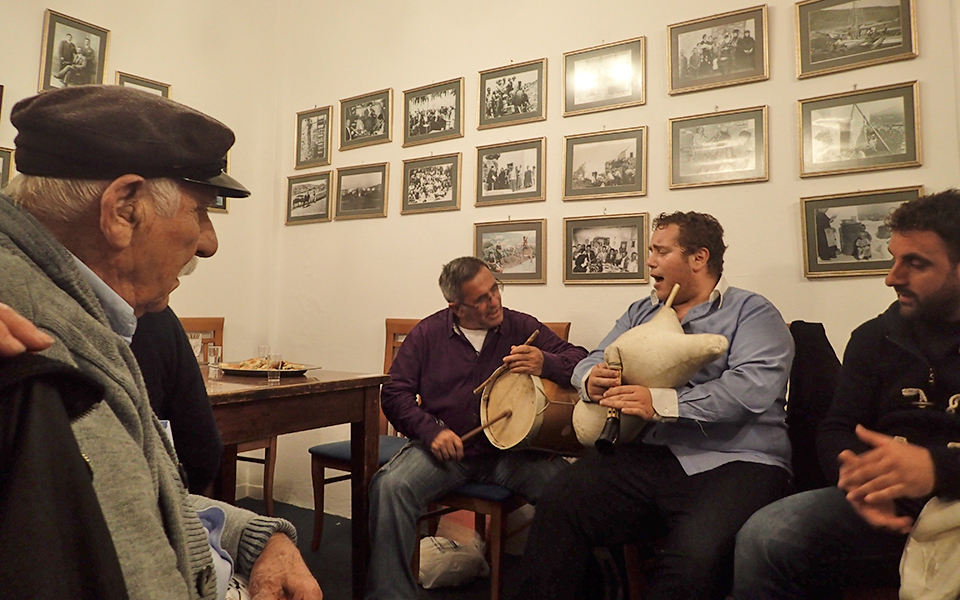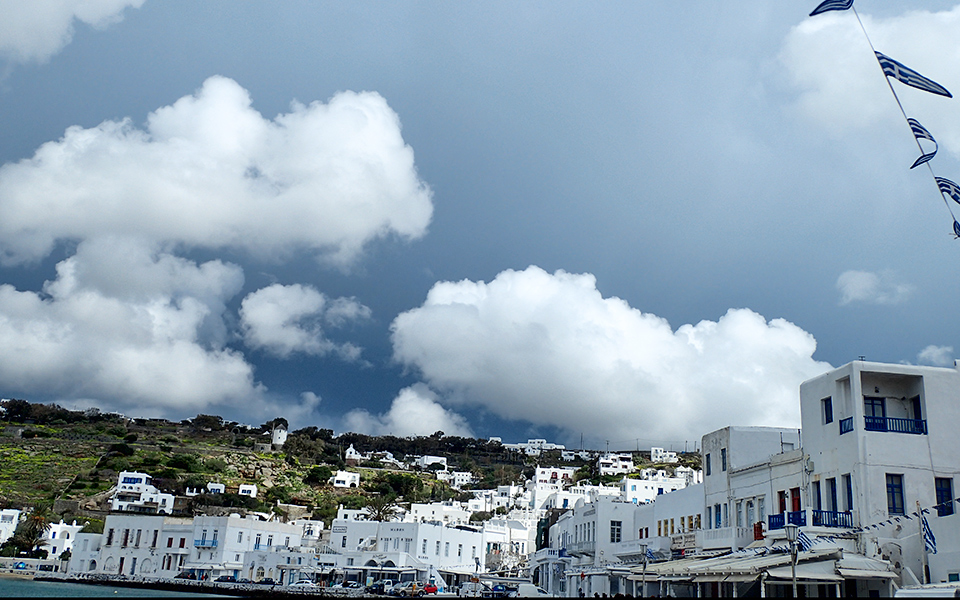Greece is nowhere more intense in the summer than on Mykonos. A cosmopolitan magnet for six months of the year, the sheer volume of traffic itself is, for many, part of the draw. Fifty commercial flights a day touch down, plus nearly as many private jets, while countless yachts vie for 220 of the summer’s most coveted berths. In the heat of the high season, Mykonos carries you along on a wave of feel-good pop and prosecco. Subtle Cycladic charms serve as a backdrop for swarms of visitors having as a good a time as you are, getting startled by the pelican (much bigger than you think) and pretending not to notice the celebrities.
So why go to Mykonos now, when it is nearly deserted, under stormy skies? For that very reason – to see the intimate side of a very public place. It was like finding a secret island; Mykonos in spring is peaceful, contemplative, yet humming with anticipation. This is the season of Lent, and Easter is known to be glorious on the island.

© Amber Charmei
Although more famous for its secular attractions, Mykonos has close to 600 churches (this on an island with just one high school) and every corner of the Chora sings with the chiming of bells, alive with devotion. Easter also brings with it the official start of the season – amid the church bells we hear buzz-saws and hammers. Mingling with the heady aroma of incense, the smell of fresh paint is everywhere. All of Chora seems like a giant theater set a few weeks before the curtain goes up. As we dodged ladders in the alleys, we felt the excitement of being backstage, with all the privilege that implies.
What counts as privilege in this most exclusive of worldwide destinations? Experiencing the Mykonians themselves, their warmth and their depth. Even though they are saturated with outsiders for half the year, in the quieter season they welcome you to share in the life of the island. This is how we ended up at a tsambounia – a bag-pipe festival, in the sleepy hilltop village of Ano Mera on a Friday night in the driving rain, learning a traditional dance (Mykonian etiquette dictates: embrace everything, and bring wine).

© Amber Charmei

© Amber Charmei
Another privilege of spring is the profound solitude. Delos may draw over 100,000 visitors per year, but pre-season there are just two little boats a week. In our group of ten were four young archaeologists on a pilgrimage; they were generous with knowledge, and their sheer joy was contagious. We wandered freely among the ruins, entirely alone but for sheep grazing on weeds from the sacred soil. A tempest threatened, but held off. The ruins were rendered even more eloquent in reflective ponds left by spring rains.
Having climbed Delos’s Mt. Kythnos to see Tinos and Nyssiros and Syros in the distance, we were starving when the boat docked in Mykonos harbor. There’s little choice of places to eat pre-season – just one ouzeri is open in the Chora in spring. But Bakoyas (that’s what everyone calls it, but look for “Gialos”- the name on the sign), a local favorite, is the only one you need. We skipped the harbor view outdoors in favor of the classic, low-key interior with fluorescent lights and thick marble tables. There one finds crisp fried baby fish you eat whole, Mykonos’ special white taramosalata (fish roe dip), and, from the neighboring tables of regular customers, a little salty talk.
And that, after all, was what we came for, the flavor of everyday life – a Mykonos relatively few of the island’s visitors have ever really seen.












